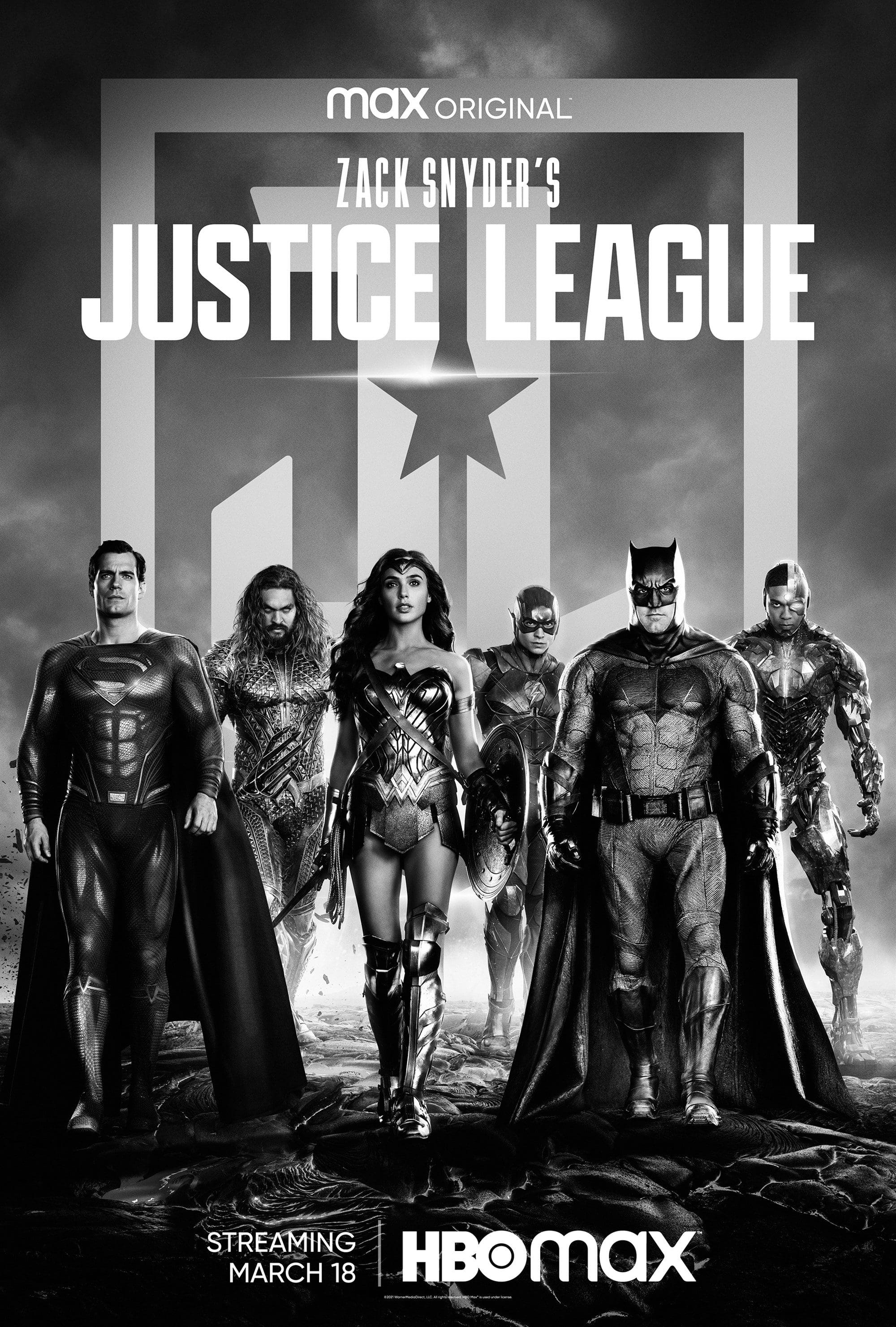
This March, few things will dominate the superhero TV discussion more than the long awaited unveiling of HBOMAX’s four-hour “director’s cut” of Zack Snyder’s Justice League. For those of you who are blissfully unaware, since the moment the 2017 Justice League film was released in theaters to critical and commercial failure, fans of the director Zack Snyder and his contributions to the wider DC cinematic canon have clamored for a director’s cut of the film that might restore Snyder’s theatrical vision for the film, which was compromised in part due to studio interference after the disappointing response toBatman v. Superman: Dawn of Justice and in part due to Snyder being forced to leave the film part way through production due to a family tragedy.
At that point, Buffy the Vampire Slayer creator Joss Whedon stepped in, finished the film, shot considerable reshoots, and shifted the tone and elements of the plot. The fanbase launched a relentless, and sometimes toxic and abusive, pressure campaign for years after, begging DC parent company Warner Media to release the original cut of the film. Since no such cut actually existed, Warner Media announced last year that they would be funding a new four-hour director’s cut, including another round of reshoots and new CG renders, to debut exclusively on IMAX screens and HBOMAX.
Given the problematic and sometimes abusive history of this fan-generated movement and the on-set allegations of abuse by Joss Whedon during the creation of the film’s theatrical cut, you may rather, like me, just let Justice League sink to the bottom of the ocean once and for all so we can all just move on with our lives. However, if you are also like me and enjoy the idea of a DC superteam saving the day on the small screen, you need not wade into the Justice League waters to get your fix. Below, I run down a list of five superteams currently available across various streaming and linear services that you can enjoy with a clean conscience. You might even like them better!
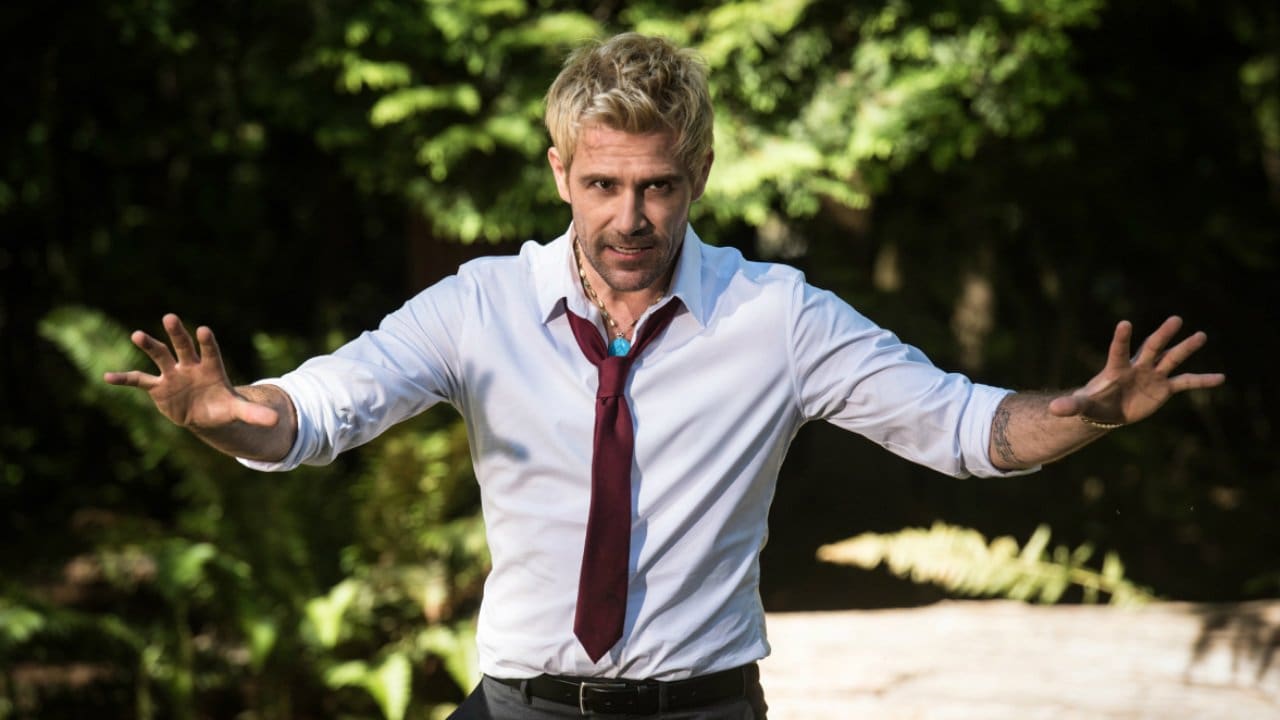
DC’s Legends of Tomorrow (The CW/Netflix)
First up is a show with DC right in the title! That’s right, it’s The CW’s ragtag group of time traveling, demon killing, good-for-nothing layabouts, The Legends. Anchored by an always game Caity Lotz (who originated the character of Sara Lance a.k.a. the Black Canary a.k.a. the White Canary back on Arrow in 2013), this series took a few years to really find its footing.
Most people agree that Season 1 is far too serious, bogged down by dour visions of the future and a dreadfully boring central arc. Season 2 certainly pivoted in the right direction, making Lotz’s Sara the captain of the Legends’ time traveling spaceship, known as the Waverider, and shifting her into more of a lead role amidst the ensemble. By Season 3, the folks behind the scenes started to really embrace the silly and wacky potential of a group of C-string superheroes and rogues with hearts of gold coming together on a time machine spaceship for weekly time travel capers, and it was clear sailing from there.
If you have seen other Arrowverse series, you may recognize some faces, like the aforementioned Lotz. Other cast members who were on previous DC series include Victor Garber, as one half of the nuclear powered Firestorm (alongside Franz Drameh), and Wentworth Miller as Captain Cold, Dominic Purcell as Heat Wave, and Keinyan Lonsdale as Kid Flash (all from The Flash).
You may also notice members from Arrow, such as Neal McDonough as Damion Darhk, John Barrowman as Malcolm Merlyn, and Brandon Routh as The Atom. Starting in Season 3, the team even welcomed Matt Ryan, who reprised his role of Constantine from the short-lived NBC series of the same name. However, you really don’t need to know anything (even what happened in the first two seasons) to appreciate this light and fun weekly romp through time, magic, and, in its upcoming seventh season, space! All past seasons are currently streaming on Netflix in the US and weekly episodes are set to return to The CW later this year.
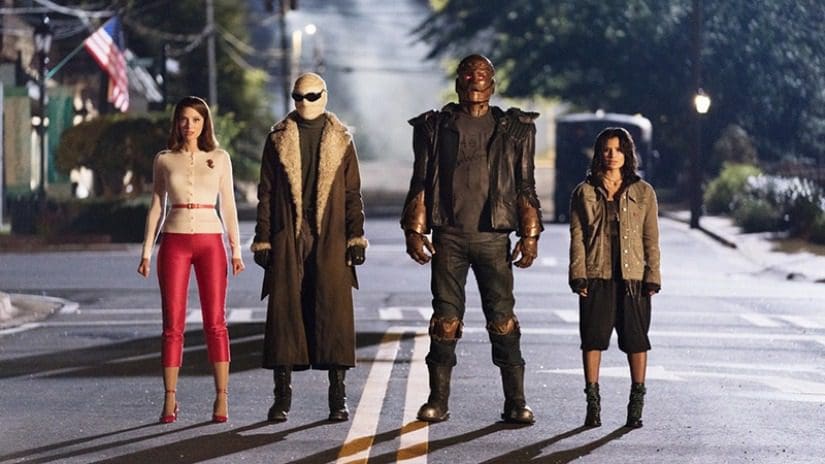
Doom Patrol (DCUniverse/HBOMAX)
Following the theme of wacky fun (which is sorely lacking in most Snyder-related DC content), allow me to next shine my spotlight on the wonderfully tortured weirdos and misfits of Jeremy Carver’s 2019 series Doom Patrol. This series was originally designed as a spinoff of DCUniverse’s first live action original Titans (more on that coming up) before shifting into a completely original work with little resemblance to the team’s cameo in Season 1 of its would-be parent series.
Now in its third season (having survived the move to its new home on HBOMAX), the series features a true group of outcasts, whose superpowers present as many problems as they might help solve. This includes characters like Brendan Fraiser’s Robotman, who is the brain of a former racecar driver housed inside a crude robot body, and Diane Guerrero’s Jane, who holds dozens of alternate personalities in her mind, each with their own superpowers. They are led by a Professor X knock-off (though technically the Doom Patrol comic did originally debut a few months before the X-Men, so who’s to say who is knocking off who…), Niles Caulder, played exceptionally well by Timothy Dalton, and feature Alan Tudyk’s Mr. Nobody (a malevolent cross between Deadpool and Doctor Manhattan by a man who, on occasion, plays The Joker) as their chief antagonist.
Unlike Legends, this series spends the time to really explore both the sometimes horrific and alienating physical states of our heroes and the genuine traumas that helped find them in their states. An example is Matt Bomer’s Larry Trainer (aka Negative Man), whose life as closeted astronaut found him on a collision course with an alien being of negative energy that now resides in his body and has made his physical body radioactive outside of protective bandages.
However, the series also balances that darkness and trauma with the introduction some of the strangest, most gloriously weird corners of the DC universe and beyond, such as the inclusion of Danny the Street, a sentient, nonbinary, genderqueer street that can communicate through signage and teleport from location to location while serving as a safe haven for drag queens, queer people, and other socially unconventional folks. At one point, a throng of carnivorous butts even attack members of an evil government agency. The show contains multitudes, is what I’m saying.
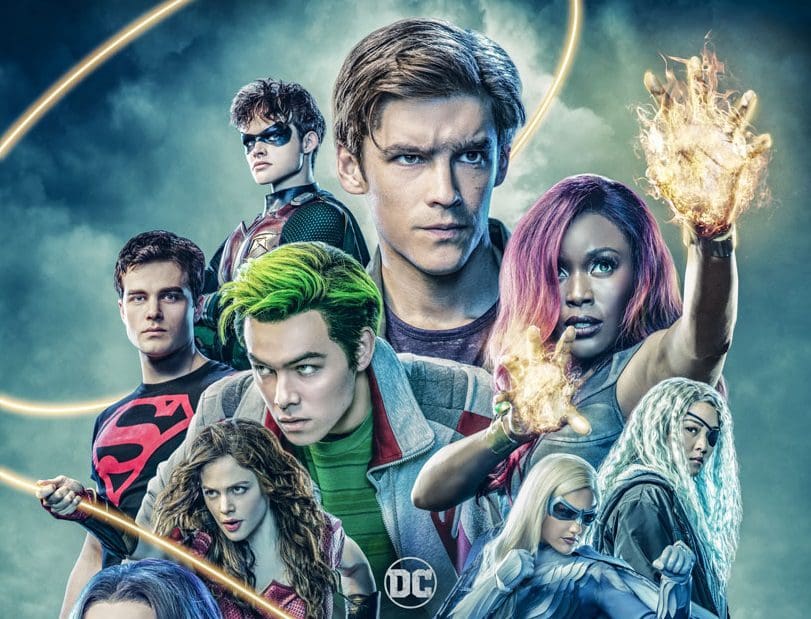
Titans (DCUniverse/HBOMAX)
If weird and/or wacky is not what you are looking for in a superhero team up series, fear not. Titans has you covered. This series is a loose adaptation of the decades old comic book line known as Teen Titans, which is essentially a supergroup led by Brenton Thwaites’ Dick Grayson (a.k.a. Robin) consisting of many of the kid sidekicks of DC’s most famous heroes, along with a few original heroes mixed in. The series takes its cue from the comic’s lore, but it, like many of these shows, is not without its growing pains.
In the series’ first season, the creative team tried desperately to appeal to the middle school boys’ understanding of a dark and gritty superhero series. The series opened with Robin, mercilessly beating down a bunch of would-be criminals while uttering “F*** Batman” under his breath. He was suffering from bloodlust after years of using other people’s pain as a coping mechanism for his trauma, and he led a disjointed group of vigilantes who all suffered from their own problems like cosmic amnesia, drug addiction, erectile dysfunction, and accidentally turning into a murder demon sometimes. The color palette of the series was oppressively grey and muted, and the series’ idea of personality was exclusively the providence of needle drops during fight scenes. Basically, it was a mediocre mess.
However, the creative team seemed to really take some of the criticism of the series to heart while developing its second season. The result was a soft reboot for the entire series. Suddenly, the Titans were calling themselves by that name; they had a headquarters in San Francisco; they were a true superhero ensemble complete with interpersonal drama and costumed heroics; and they were joined by more recognizable heroes like Superboy, Aqualad, and Patch Wilson (Deathstroke’s teen daughter). The series embraced its comic book roots and even tried its hand at adapting one of the Titan’s most iconic storylines “The Judas Contract,” to fairly positive results. Its latest season is headed to HBOMAX later this year with even more familiar faces, such as Tim Drake’s Robin, set to debut.
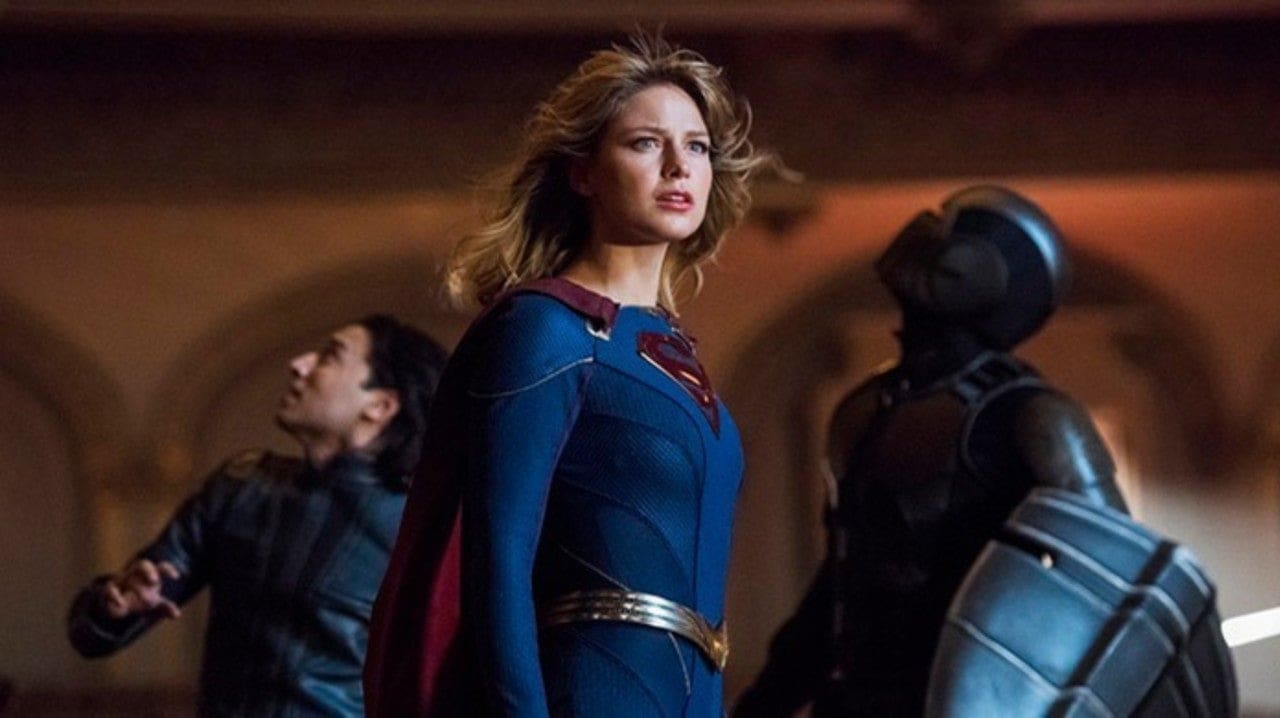
Supergirl (CBS/The CW/Netflix)
You might be surprised to see Supergirl, ostensibly a solo superhero show, on a list of the best DC superhero teams on TV. It is true that Supergirl, which debuted on CBS before moving over to its corporate sibling The CW starting in Season 2, is a series primarily centered around the exploits of Melissa Benoist’s Kara Danvers (aka Supergirl). However, most DC solo series on The CW eventually cannot resist the temptation to surround their primary hero with a team of heroes to command. On Supergirl, the team, affectionately referred to in-universe as the Superfriends, has consisted of many heroes, including The Martian Manhunter, Miss Martian, Guardian, Mon-El (sometimes known as Valor in the comics), Brainiac 5, and, most recently, Dreamer, and it is far and away the best superteam on a solo series.
This group, along with ace DEO agent Alex Danvers (a.k.a. Kara’s adoptive sister played by Chyler Leigh), who is typically in the field assisting the team, support and care for Kara both in battle and in her personal life as she wrestles with the obligations of being a hero and the desire to have a life outside of that, namely as an ace reporter for Catco Magazine. Over the years, the Superfriends have helped Kara fight off alien invaders, racist far right extremists, nefarious tech organizations, rogue government agencies, and even John Cryer’s Lex Luthor a time or two, all through a beautiful mix of super heroics and inspirational speeches that live up to Supergirl’s hopeful Kryptonian roots. Past episodes of the series can be found on Netflix in the US, and Supergirl’s sixth and final season will begin March 30th on The CW.
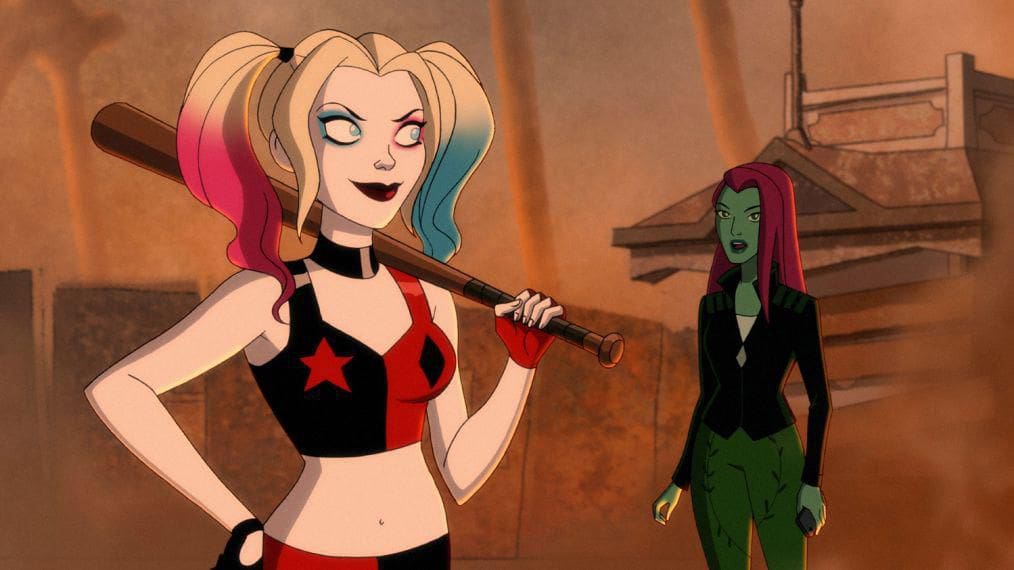
Harley Quinn (DCUniverse/HBOMAX)
Finally, we get to another super heroine of a very different kind. It may be a bit of a stretch to include the adult-oriented animated series Harley Quinn, created by Justin Halpern, Dean Lorey, and Patrick Schumacker, on a list of the best DC supergroups on TV. Maybe an animated series like Justice League Unlimited, Teen Titans, or Young Justice may have been a better fit, but I dropped off of the extended DC Animated Universe right around the time Batman Beyond went off the air, so I would not be the best person to speak on the merits of those classics in animated television. I also could have gone with Teen Titans…Go!, but that series is so omnipresent (and rightfully so) that you surely know by now whether its sugar-rush, hangout vibe is for you or not. So, skipping over the kids cartoons for an adult animated series, there was really no choice beyond Harley Quinn.
The series initially is centered on Kaley Cuoco’s Harley Quinn as she works through her breakup with Alan Tudyk’s Joker by forming her own evil crew to take over Gotham. That crew ends up being more heroic than any of them intended, mostly due to Harley’s need to protect herself from the antics of the other baddies running around Gotham and her quest to vanquish them so that she can be the queen bee of Gotham’s underground.
The series is surprisingly sweet in its interpersonal dynamics within the group, while never betraying the slightly off-kilter and morally grey roots of its characters origins. The team, made up of Clayface, Dr. Psycho, King Shark, Sy Borgman, and Poison Ivy (and her on-again off-again flame, Kite Man), are a hilarious blend of vice, villainy, and unexpected virtue when the moment calls for it. The less said about this one the better, as it truly must be experienced to be understood. Impressively, the balance struck by all involved never sells out the characters’ villainy, while still allowing us to laugh along with and even root for them. And despite debuting in late 2019, the series already has two fantastic seasons under its belt with a third on the way in the near future.

